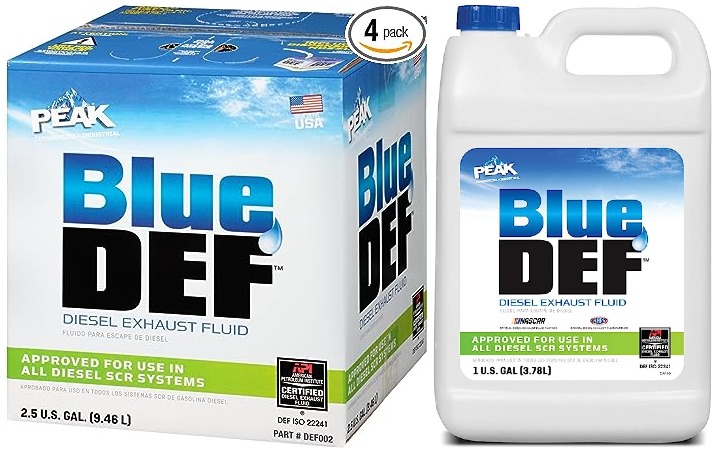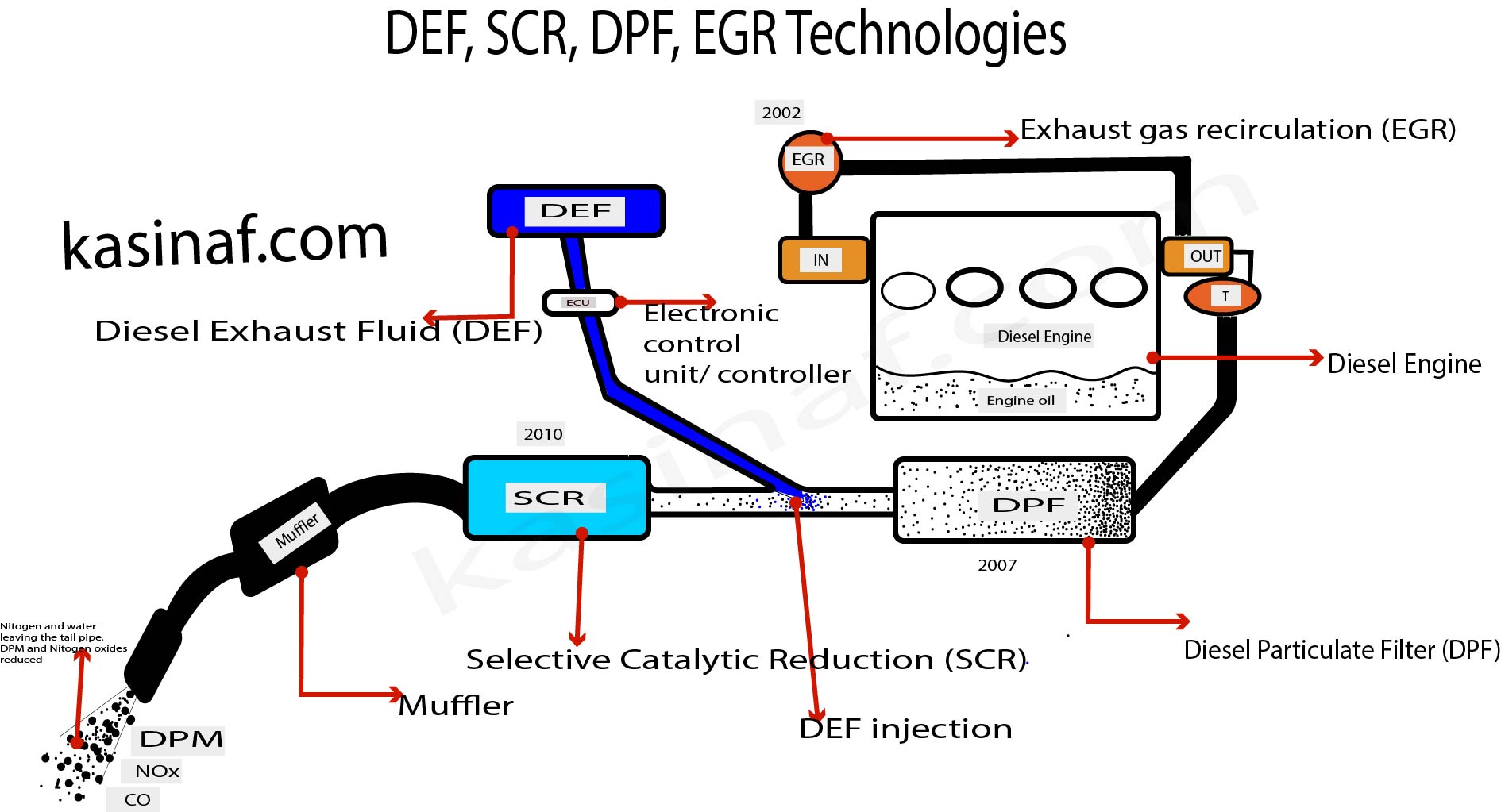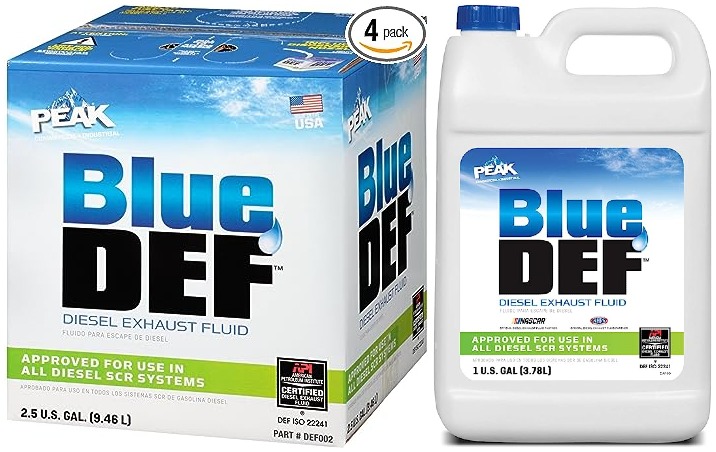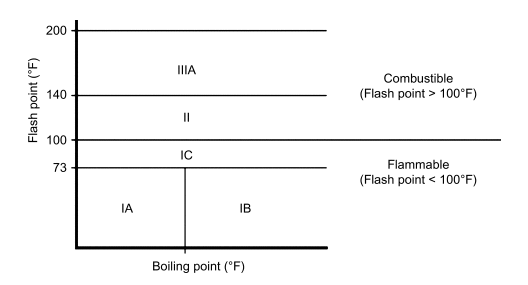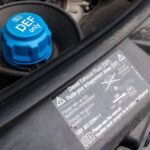What is DEF?
DEF for diesel
Diesel Exhaust Fluid (DEF) is a solution used in modern diesel engines equipped with Selective Catalytic Reduction (SCR) systems to reduce harmful emissions of nitrogen oxides (NOx) to nitrogen gas and water which are harmless and present in the air we breathe, reducing emissions by up to 90% and above. It is a clear, non-toxic, and colorless liquid that consists of 32.5% urea and 67.5% deionized water. The urea content in DEF undergoes a chemical reaction with the exhaust gases in the SCR system, converting harmful NOx emissions into nitrogen gas and water vapor, which are much less harmful to the environment.
The DEF is stored in a separate tank on the vehicle, and a small amount is injected into the exhaust stream, just before it passes through the SCR catalyst. This process helps diesel engines meet the stringent emission standards set by various regulatory agencies worldwide.
Diesel Exhaust Fluid is commonly known by its brand name “AdBlue” in Europe. The use of DEF has become prevalent in many diesel vehicles, including commercial trucks, buses, and some passenger cars, as it plays a crucial role in reducing air pollution and improving air quality.
what is def for?
The main purpose of Diesel Exhaust fluid (DEF) is to reduce harmful emissions, particularly nitrogen oxides (NOx) produced by diesel engines, which are a major contributor to air pollution. The diesel vehicles or Engines manufactured in 2010 and above are equipped with Selective Catalytic Reduction (SCR) systems that uses DEF to reduce Nitrogen oxides emissions by 90% and above.
DEF is used to lower nitrogen oxide (NOx) emissions in diesel engines equipped with SCR systems. It is a fluid made of high-purity urea and deionized water. When injected into the exhaust stream, DEF undergoes a chemical reaction to convert NOx into harmless nitrogen and water vapor.
This helps diesel engines comply with strict emission regulations set by Environment Protection Agency (EPA) , reduce air pollution, and improve overall environmental impact.
How DEF works to reduce emissions
When a diesel engine operates, it produces exhaust gases containing NOx. The SCR system uses DEF to convert these harmful NOx emissions into harmless nitrogen and water vapor through a chemical reaction.
Here’s how it works:
- DEF Injection: As the exhaust gases pass through the SCR system, a precisely measured amount of DEF is injected into the exhaust stream.
- Ammonia Release: DEF decomposes into ammonia (NH3) and carbon dioxide (CO2) when exposed to high temperatures. The heat in the exhaust gas causes the DEF to release ammonia.
- NOx Reduction: The released ammonia reacts with the NOx in the presence of a catalyst within the SCR converter, converting NOx into nitrogen (N2) and water vapor (H2O). This reaction effectively reduces the harmful nitrogen oxides to harmless components.
By using DEF and the SCR system, diesel engines can meet stringent emission regulations and significantly reduce their nitrogen oxide emissions, making them more environmentally friendly. This is particularly important in reducing the environmental impact of diesel-powered vehicles, especially in heavy-duty applications like trucks, buses, and construction equipment.
It’s important to note that DEF is not mixed with diesel fuel. Instead, it is stored in a separate tank on the vehicle, and the engine’s electronic control unit (ECU) manages the injection of DEF into the exhaust system as needed.
The use of DEF has become more widespread as governments and environmental agencies have implemented stricter emission standards to improve air quality and reduce the environmental impact of diesel engines.
What is the purpose of DEF? | Def for diesel
What happens if you don’t put DEF in your truck?
If you don’t put DEF in your truck, the emissions system won’t function properly. Ignoring DEF warnings may lead to reduced power or engine failure. Running out of DEF can cause downtime and costly repairs. Monitor and refill DEF regularly to avoid problems.
If you don’t put DEF (Diesel Exhaust Fluid) in your truck, the consequences can be severe. The truck’s emissions system heavily relies on DEF to reduce harmful emissions, and ignoring DEF warning lights can lead to various issues. Some diesel engine manufacturers may allow the engine to enter reduced power mode as a precaution, but if the DEF tank runs dry, the engine may eventually refuse to start altogether. This could result in days, weeks, or even months of downtime and potentially thousands of dollars in repair costs. To avoid these problems, it’s crucial to regularly monitor DEF levels and refill the tank as needed to ensure proper engine operation and compliance with emissions regulations.
What is the purpose of DEF for diesel?
Do all diesel trucks need DEF?
Not all diesel trucks require DEF (Diesel Exhaust Fluid). Trucks equipped with older diesel engines or those exempt from emissions regulations may not use DEF. However, most modern diesel trucks, especially those produced after 2010, are equipped with emissions systems that rely on DEF to reduce harmful pollutants, meeting stringent environmental standards.
What diesel trucks don’t use DEF?
Diesel trucks manufactured before the implementation of stringent emissions regulations (typically before 2010) and certain exempt vehicles may not use DEF (Diesel Exhaust Fluid). These older trucks often do not have the advanced emissions systems that require DEF to meet current environmental standards. However, most modern diesel trucks, especially those produced after 2010, are equipped with DEF systems to reduce harmful emissions.
Vehicles and equipment exempted from DEF usage
Certain exempt vehicles from using DEF (Diesel Exhaust Fluid) are typically heavy-duty diesel-powered equipment and vehicles that are not subject to the same emissions regulations as on-road vehicles. Some examples of exempt vehicles may include:
- Off-Road Construction Equipment: Large construction machinery, such as bulldozers, excavators, and loaders, used at construction sites, are often exempt from DEF requirements due to their off-road nature.
- Farm Equipment: Agricultural machinery like tractors and combine harvesters used exclusively on farms may be exempt from DEF usage.
- Industrial Generators: Diesel generators used in industrial settings for backup power or continuous operation might be exempt from DEF requirements.
- Military Vehicles: Military trucks and equipment may be exempt from certain emissions regulations, including DEF usage, due to their specialized applications.
- Antique and Vintage Vehicles: Classic or antique diesel vehicles produced before the implementation of DEF systems may be exempt from the requirement.
It’s important to note that the specific exemptions can vary depending on the country, region, and local regulations. Exempt vehicles may still have to adhere to different emissions standards or use alternative technologies to control pollutants.
Is it illegal to delete the DEF?
Yes, it is illegal to delete or tamper with the Diesel Exhaust Fluid (DEF) system in vehicles that are required to have it. DEF systems are essential for reducing harmful emissions and meeting strict environmental regulations. Removing or bypassing the DEF system can lead to increased pollution, violation of emissions standards, and potential legal consequences, including fines and penalties. Additionally, tampering with emissions control systems may void the vehicle’s warranty and impact its resale value. It is crucial to comply with emission regulations to protect the environment and adhere to the law.
Is it worth deleting DEF?
The decision to delete the Diesel Exhaust Fluid (DEF) system is a controversial and complex one with both pros and cons. Some people consider deleting the DEF system in their diesel vehicles to gain certain benefits, while others advise against it due to legal, environmental, and mechanical considerations. Here’s a brief overview of the potential advantages and disadvantages:
Pros of Deleting DEF:
- Cost Savings: DEF can be an additional expense, and deleting it may save money on fluid refills.
- Improved Fuel Efficiency: Without DEF, some users claim to experience a slight increase in fuel efficiency, although this is not always significant.
- Fewer Maintenance Issues: DEF-related problems, such as DEF pump failures or injector clogging, can be avoided.
Cons of Deleting DEF:
- Illegal: Deleting or tampering with emission control systems is illegal in many countries and regions, leading to potential fines and penalties.
- Environmental Impact: DEF plays a vital role in reducing harmful emissions and air pollution, so removing it contributes to increased pollution.
- Voiding Warranties: Removing the DEF system may void the vehicle’s warranty, leading to increased repair costs in case of mechanical issues.
- Failed Emissions Tests: Vehicles without proper emission control systems are likely to fail emissions tests, preventing registration or operation in some areas.
- Reduced Resale Value: Vehicles with deleted DEF systems may have reduced resale value due to non-compliance with emissions regulations.
It is essential to consider all aspects, including legal implications, environmental responsibility, and long-term mechanical consequences, before deciding to delete the DEF system. If you are concerned about DEF costs or maintenance, it’s advisable to explore other options, such as seeking more fuel-efficient vehicles or optimizing driving habits to maximize DEF efficiency. It is essential to comply with emission regulations to protect the environment and ensure legal compliance.
What happens if you delete the DEF on a diesel?
If you delete the Diesel Exhaust Fluid (DEF) on a diesel vehicle, soot-clogging issues may be eliminated, leading to potential performance improvements, such as increased torque, horsepower, and better fuel economy. However, it’s important to note that these positive changes can vary based on the tuner, after-market software, and engine hardware used during the delete process. Despite potential benefits, it is essential to consider the legal and environmental implications of deleting the DEF system, as it is illegal in many regions and contributes to increased emissions and air pollution. Additionally, deleting the DEF system may void warranties and could lead to failed emissions tests and reduced vehicle resale value.
How often do you need to fill DEF fluid?
The frequency of DEF (Diesel Exhaust Fluid) refills varies depending on the vehicle’s size and usage. DEF is typically consumed at a rate of about 2-3% relative to the amount of diesel fuel used. For instance, a vehicle with a 20-gallon fuel tank may need approximately 0.4 to 0.6 gallons of DEF.
Let’s consider two examples:
- Example 1: Passenger Car A standard passenger car with a 15-gallon fuel tank will require approximately 0.3 to 0.45 gallons of DEF for every full tank of diesel. With a DEF tank capacity of 2.5 gallons, the driver will need to refill DEF approximately every 5 to 8 times they fill up with diesel.
Calculation for DEF Refill Frequency
Example 1: Passenger Car
Fuel Tank Capacity: 15 gallons
DEF Consumption Rate: 2-3% of diesel fuel used
DEF Consumption per Tank (15 gallons * 0.02) = 0.3 gallons
DEF Consumption per Tank (15 gallons * 0.03) = 0.45 gallons
DEF Tank Capacity: 2.5 gallons
DEF Refill Frequency:
Lower Consumption (0.3 gallons): 2.5 gallons / 0.3 gallons ≈ 8.3 times
Higher Consumption (0.45 gallons): 2.5 gallons / 0.45 gallons ≈ 5.6 times
So, the driver will need to refill DEF approximately every 6 to 9 times they fill up with diesel.
- Example 2: Heavy-Duty Truck A heavy-duty truck with a large 100-gallon fuel tank will need about 2 to 3 gallons of DEF for each full tank of diesel. With a DEF tank capacity of 10 gallons, the driver will need to refill DEF approximately every 3 to 5 times they fill up with diesel.
Example 2: Heavy-Duty Truck
Fuel Tank Capacity: 100 gallons
DEF Consumption Rate: 2-3% of diesel fuel used
DEF Consumption per Tank (100 gallons * 0.02) = 2 gallons
DEF Consumption per Tank (100 gallons * 0.03) = 3 gallons
DEF Tank Capacity: 10 gallons
DEF Refill Frequency:
Lower Consumption (2 gallons): 10 gallons / 2 gallons = 5 times
Higher Consumption (3 gallons): 10 gallons / 3 gallons ≈ 3.3 times
So, the driver will need to refill DEF approximately every 3 to 5 times they fill up with diesel.
Remember, the vehicle’s DEF warning system will indicate when DEF levels are low, signaling the need for a refill. Ignoring these warnings can lead to reduced engine power or even prevent the vehicle from starting once the DEF tank runs dry.
To ensure optimal engine performance and compliance with emissions regulations, it’s essential to monitor DEF levels regularly and refill the DEF tank when needed. This will keep your diesel vehicle running smoothly and efficiently, while also contributing to a cleaner environment with reduced harmful emissions.
Does running out of DEF limit speed?
Yes, running out of DEF (Diesel Exhaust Fluid) can limit the speed of a diesel vehicle. Many modern diesel engines with DEF systems are equipped with a feature called “limp mode” or “reduced power mode.” When the DEF tank runs empty or the DEF level becomes critically low, the vehicle’s engine control module (ECM) detects this and triggers limp mode as a protective measure.
In limp mode, the vehicle’s engine power is reduced significantly, and the vehicle may only be able to operate at lower speeds, typically around 5 to 40 miles per hour (8 to 64 kilometers per hour). The purpose of this limitation is to encourage the driver to address the DEF issue promptly and prevent potential engine damage due to increased emissions or other issues related to the DEF system.
If the DEF tank is not refilled, the vehicle’s speed will remain limited until the DEF tank is replenished and the issue is resolved. It’s essential to respond to the DEF warning and refill the DEF tank as soon as possible to restore normal engine performance and prevent extended periods of reduced power or speed limitations.
Should I keep my DEF tank full?
To maintain optimal vehicle performance, it is not necessary to keep the DEF (Diesel Exhaust Fluid) tank completely full at all times. However, it’s crucial to monitor the DEF level and avoid letting it drop below 5% of the tank’s capacity. If the DEF tank contains less than 5% of its capacity, the engine power may decrease, but there will still be enough power to travel a short distance, allowing you to add more fluid to the tank.
As a general guideline, the DEF tank needs to be filled once for every 3 to 4 times you refuel with diesel. This means that if you refill your diesel fuel tank, you should also check the DEF level and top it up if needed.
By following this approach, you can ensure that your vehicle’s emissions system functions effectively and remains compliant with environmental regulations. Regularly monitoring and maintaining an adequate DEF level will contribute to the overall performance and efficiency of your diesel vehicle.
Top of Form
Will insurance cover putting DEF in diesel tank?
Adding DEF (Diesel Exhaust Fluid) to a diesel tank is considered “misfuelling,” and most insurance policies do not cover the costs associated with this type of mistake. Whether it’s DEF, gasoline, or another substance, misfuelling can lead to costly repairs. Unfortunately, you’ll likely be responsible for the expenses, as misfuelling is generally not covered by standard insurance policies. It’s crucial to be cautious and double-check before refuelling to avoid these potentially expensive errors.

